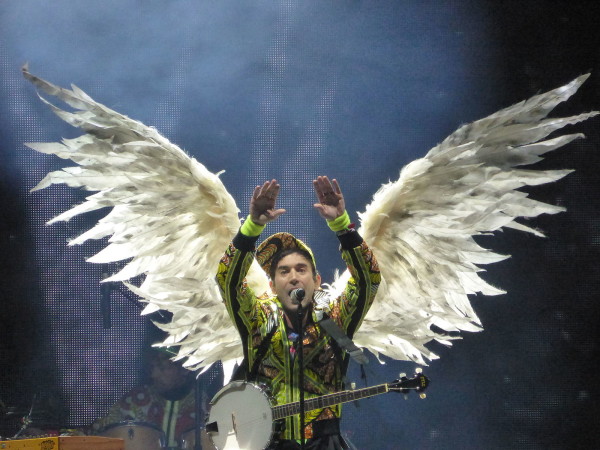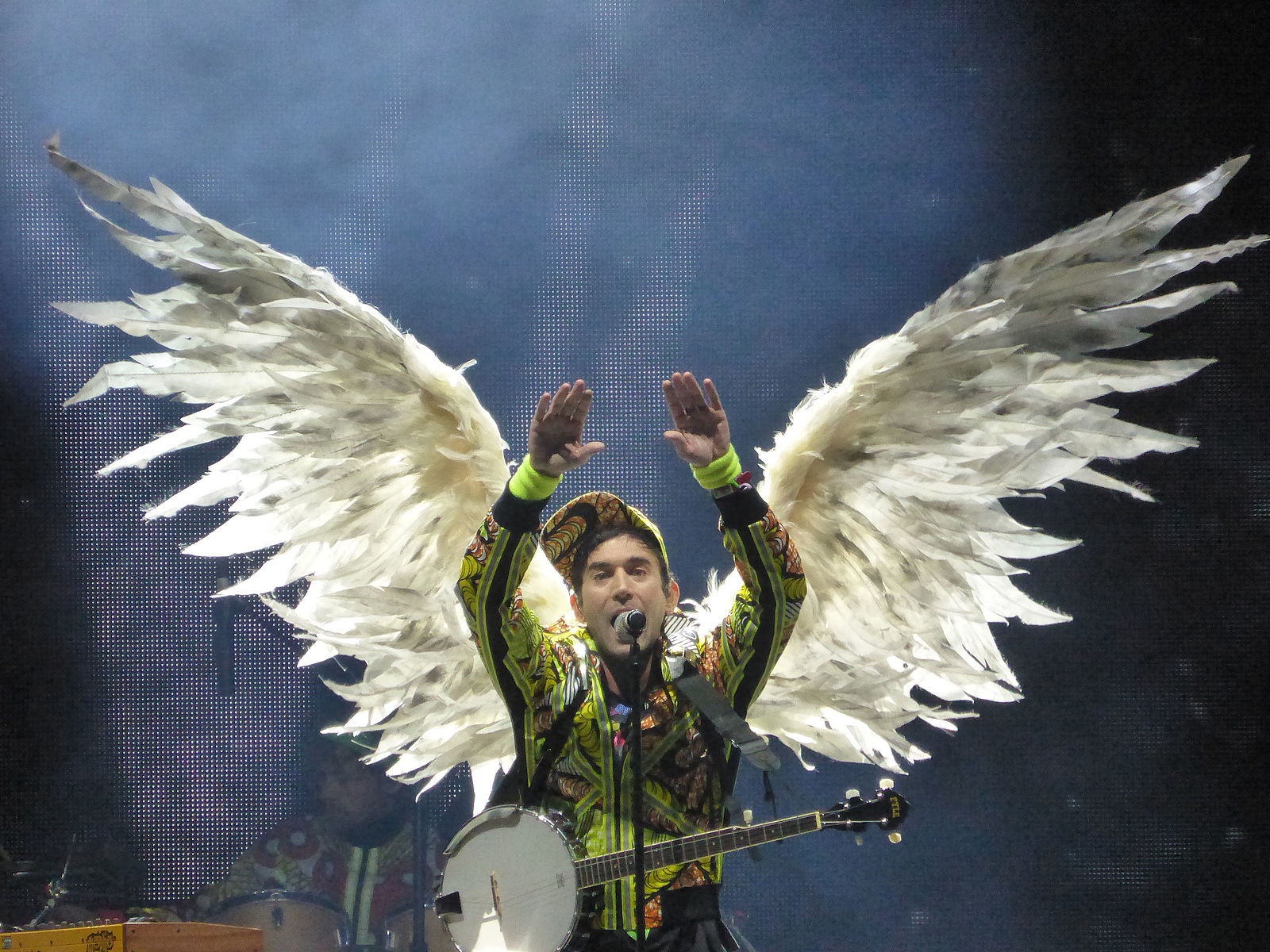
For instance, at A$AP Rocky’s Friday night show at the Outdoor Theatre, I stood in front of a trio of young men sporting liquor-filled Camelbaks and snorting cocaine off a Frisbee. A mere hour later, I watched Sufjan Stevens take over the very same stage, playing cacophonous, psychedelic versions of his indie-folk repertoire. When I glanced away from the performance, I noticed a woman sitting cross-legged on the ground, quietly knitting. It’s a truly singular event that can attract attendees from such disparate ends of the human spectrum.
In terms of both the music it provides and the listeners it draws, Coachella is a remarkably incoherent experience. Despite its desert setting and cultural notoriety, it feels like a number of festivals woven into one, stirring raucous rap, slick EDM and smaller-scale favorites into the same potion. And though music-festival purists might lament its indiscriminate mixture of top-40 hitmakers and lesser-known artists, it is precisely its multifaceted nature that makes it a worthwhile event. This desert dreamworld provides musical experiences both sought and unsought, ensuring through its breadth that its attendees hear what they want and stumble upon what they need.
Being a fan of alt-rock, I had eagerly anticipated shows by British grunge-folk quartet Wolf Alice and witty Australian rocker Courtney Barnett. Neither of their sets disappointed – both played shows marked by band camaraderie and musical expertise, shifting seamlessly from quieter, more contemplative numbers to eardrum-tearing highlights like “Small Poppies” and “Giant Peach.” Each act drew smaller crowds with a mellower, more eclectic energy to the Outdoor Theatre, and I easily snagged a front-row spot at each show.
But as I reflect on my overall experience, it was the artists I didn’t originally intend to see that truly stood out. On the recommendation of a few friends, I caught the second half of a performance by Gallant, a rising R&B star with an electrifying falsetto. His live show was nothing short of masterful, showcasing his incredible vocal and emotional range.
Another friend promised me that Gary Clark Jr. was “the future of the blues,” so I agreed to brave the early-afternoon sun and take in his set at the Coachella stage. Emanating stern coolness, Clark took command of the crowd with simmering guitar solos and no shortage of contributions from his capable backup band. I ended up staying at the same venue for Run the Jewels, a hard-hitting rap duo that I had never before heard, and was captivated by their aggressive beats and deft wordplay. I’m sure many other festival-goers experienced similarly rewarding detours and discoveries – happy accidents that might not have occurred in a musical setting any less alien and vast.
The happiest accident by far of my time at Coachella occurred after an less serendipitous occurrence – the loss of my wallet after a frenetic set by Major Lazer. After combing the confetti-littered field to no avail, I accepted defeat and drifted away from the main stage, feeling disoriented and worn down by the weekend’s aggressive hedonism. I had suddenly lost sight of the point of it all – what was driving me to spend hours in the searing sun, bouncing up and down to blaring EDM in a crowd of unwashed strangers? Was it worth the time and money spent, the wallet lost, the sunburn that made me resemble a beleaguered lobster in a crop top? Literally and figuratively lost, I wandered towards the outdoor stage, where Beach House, a band I had enjoyed in high school, was just finishing up their set. Most of the crowd was funneling towards the Chainsmokers, but, drawn by the swell of bass and blue light, I broke off with a few other stragglers to take in what was left of the show.
It ended up being the best decision I made that night. I’ve always enjoyed Beach House, a dream-pop outfit from Baltimore, Maryland, but I never expected them to be so electrifying live. They weren’t playing so much as building an ethereal wall of sound, each drumbeat and guitar riff a well-placed brick or beam. Standing amongst the crowd, illuminated cornflower blue by the hazy lighting onstage, I forgot everything for a moment – my lost wallet, my sunburn, the responsibilities and anxieties piling up back at school. I was completely immersed in a singular musical experience with the human beings around me, an immeasurably diverse assembly of people whose stories and names I might never know.
They might have intended to be there, or they might have been just as wayward as I was. But somehow, we all found ourselves in the same place, captivated by the same song, lit up in the same shade of blue. And despite the excess and exhaustion, the dehydration and the downside of Coachella’s manic sprawl, it was a moment of gratitude and clarity that I’m not sure I could have experienced anywhere else.
Contact Clare Flanagan at ckflan ‘at’ stanford.edu.
